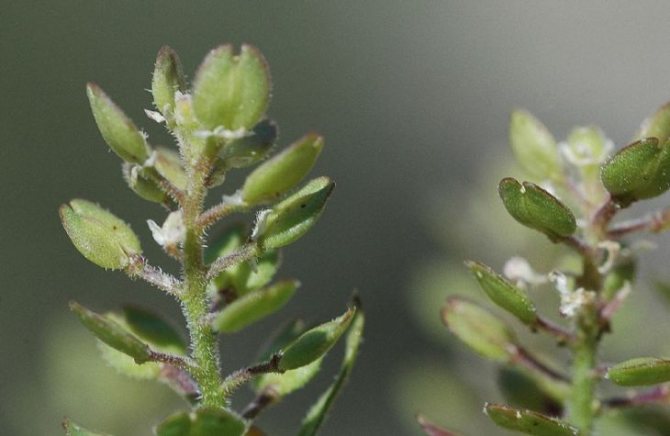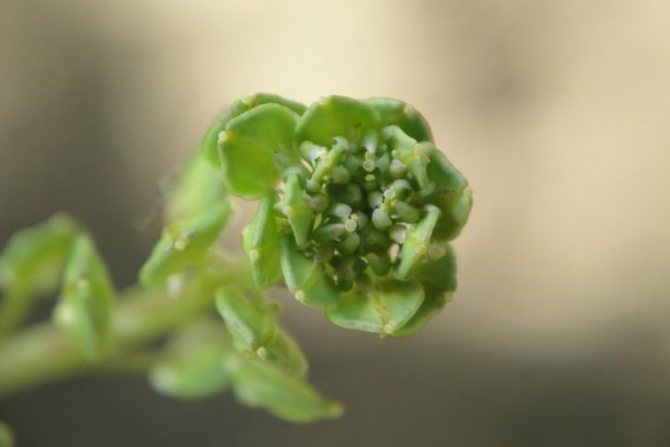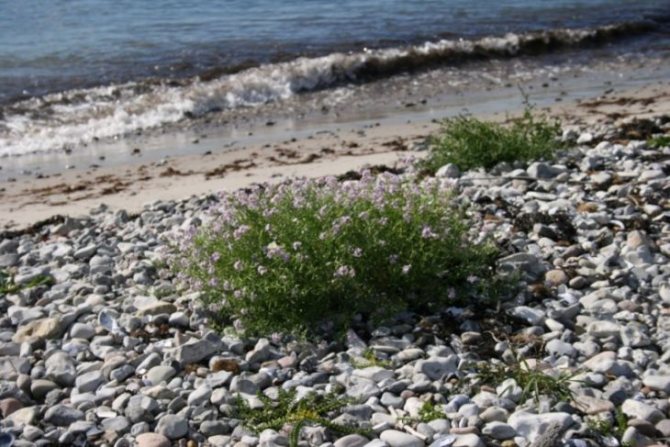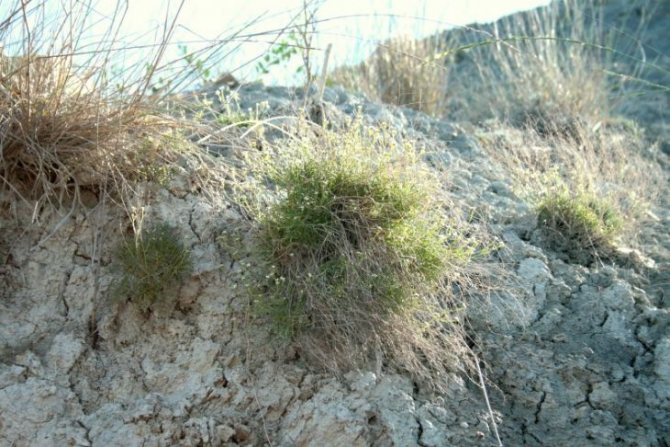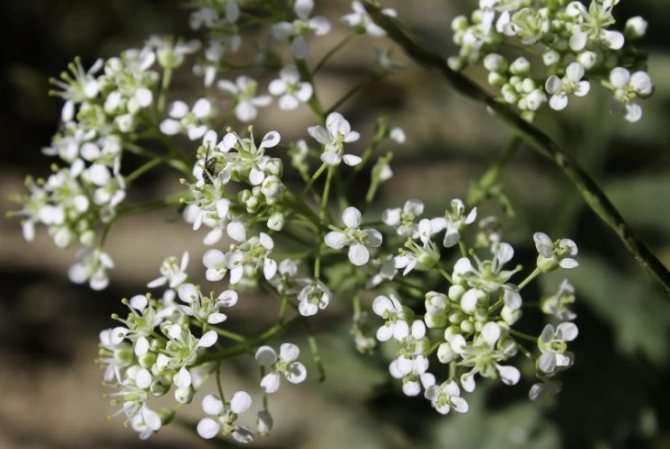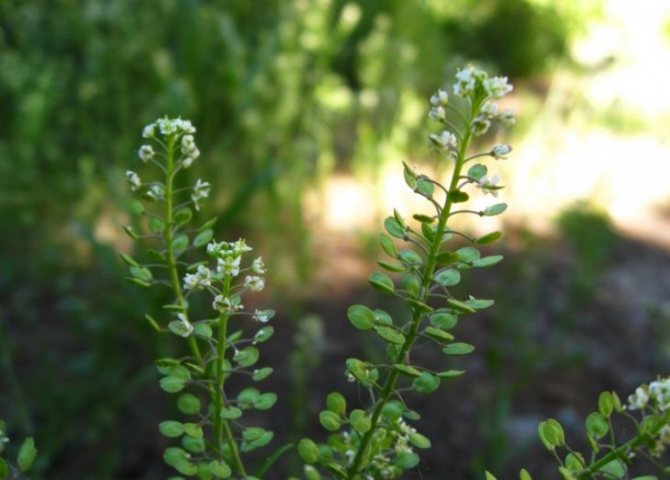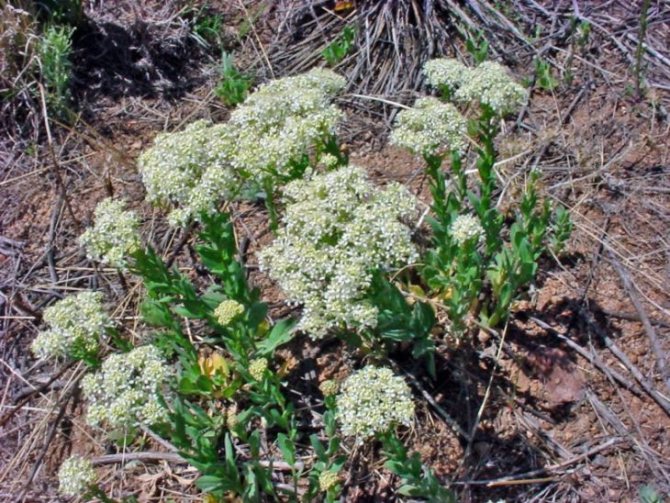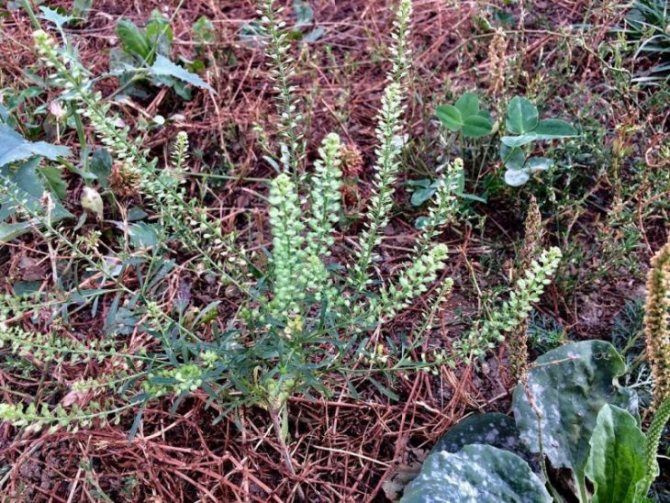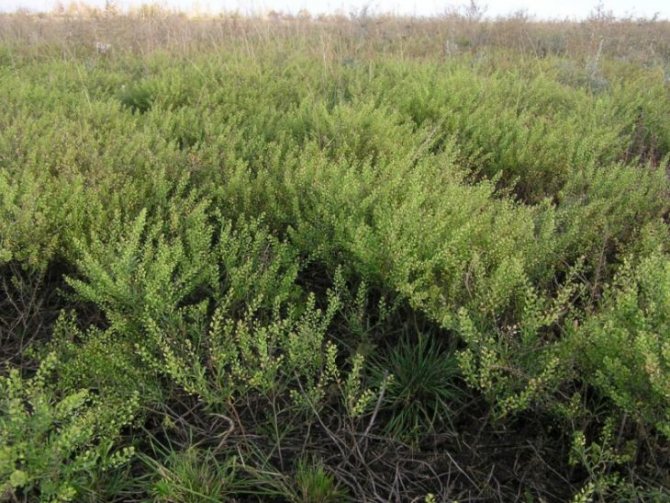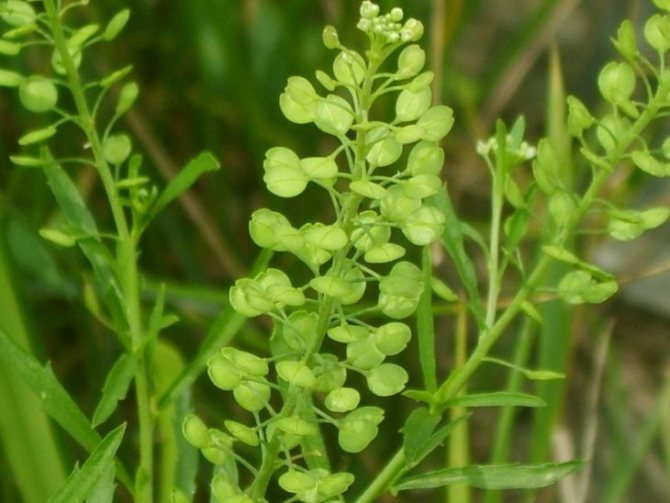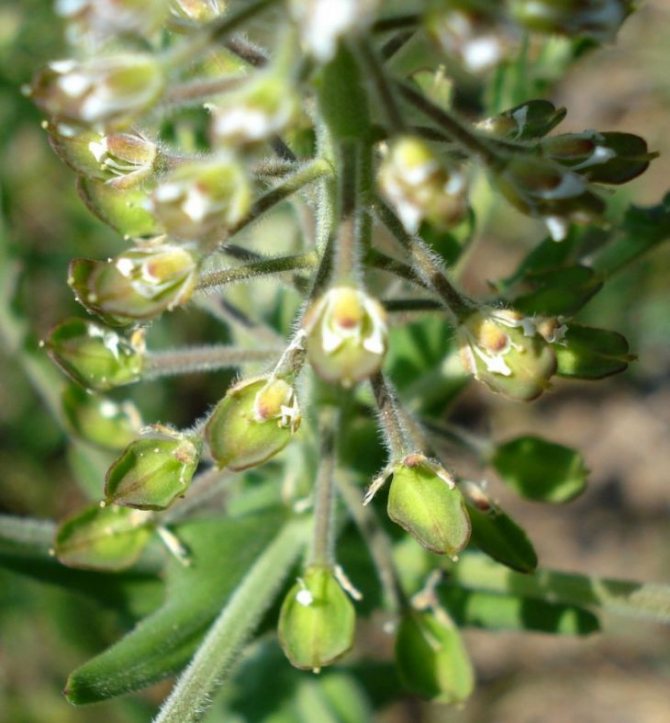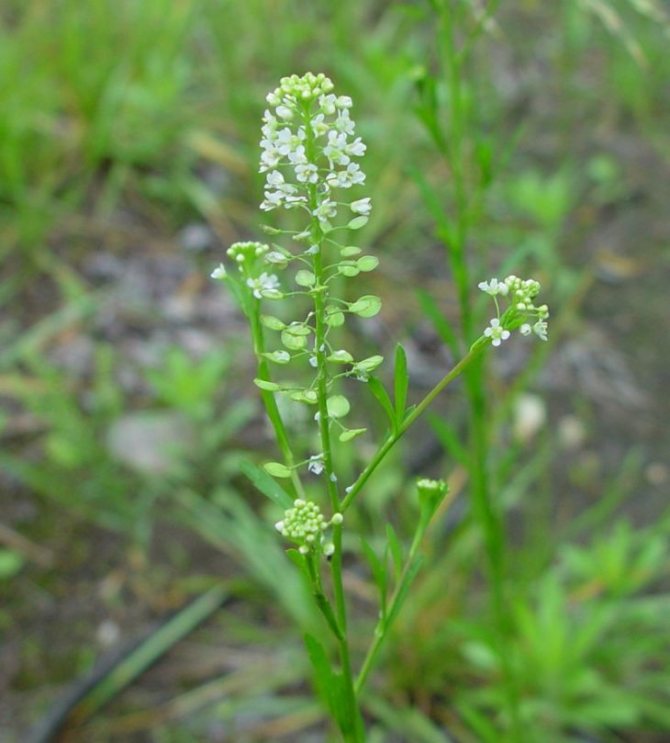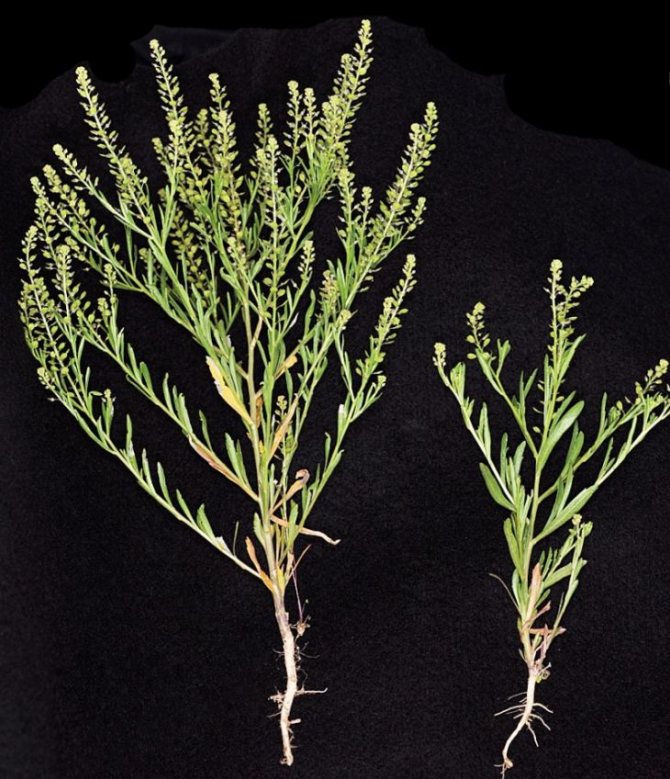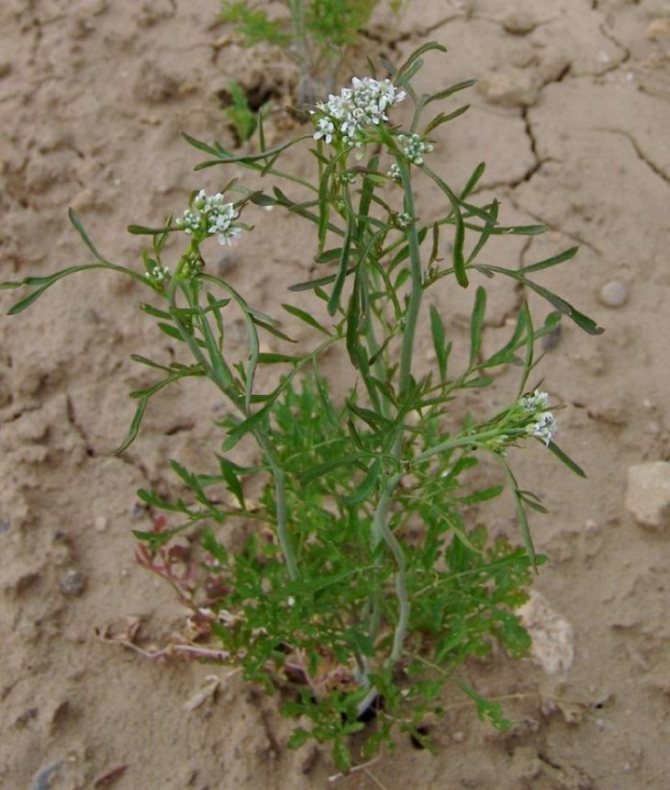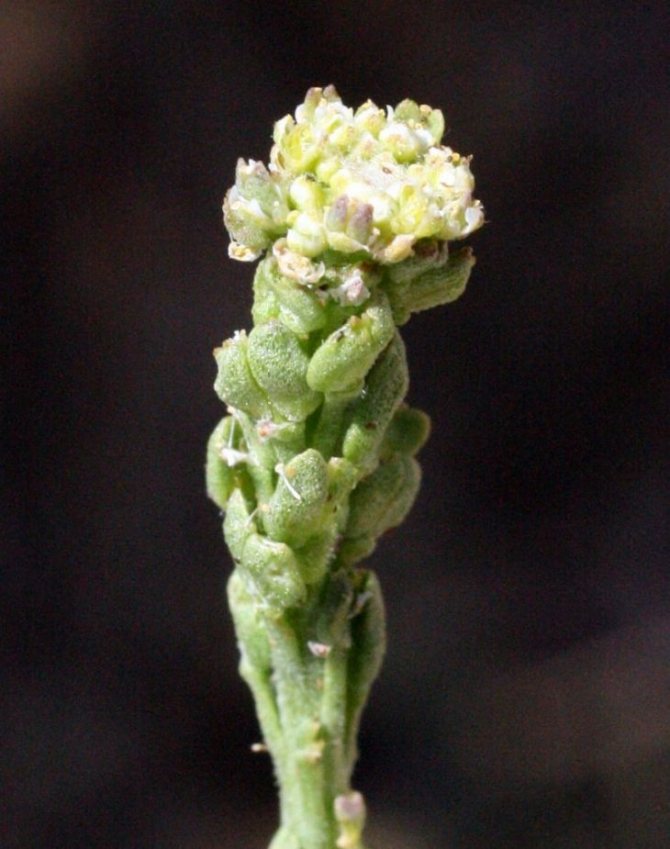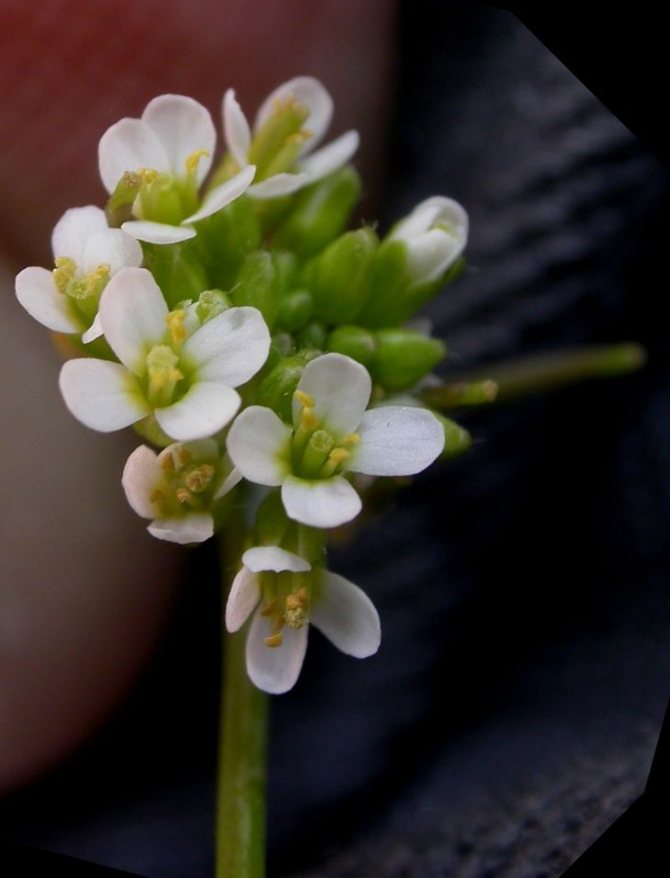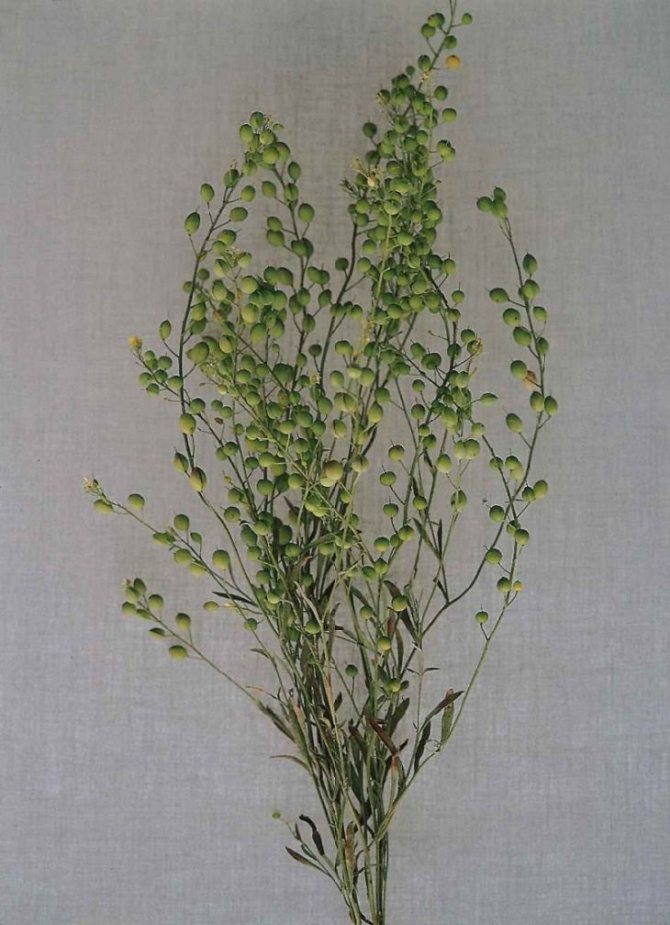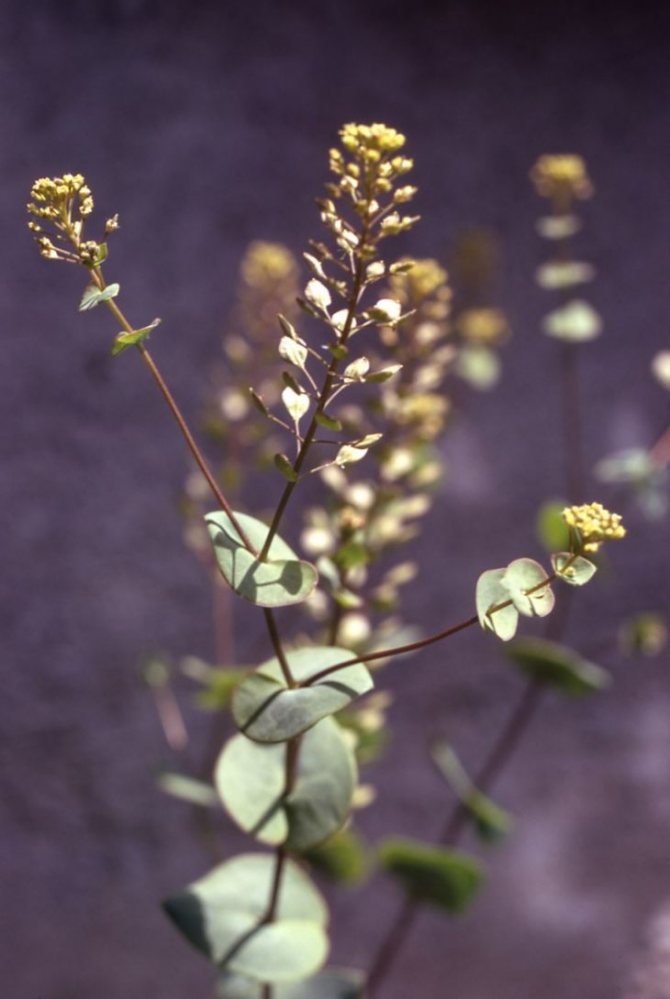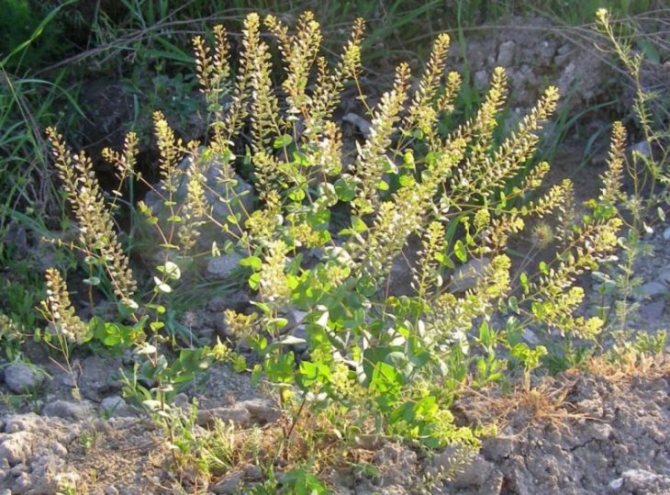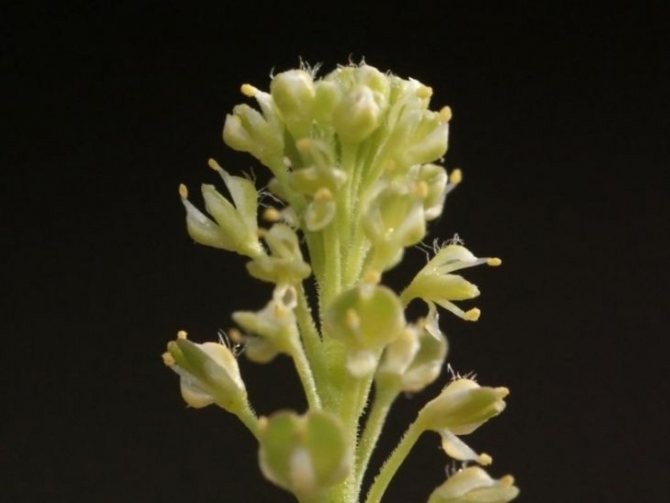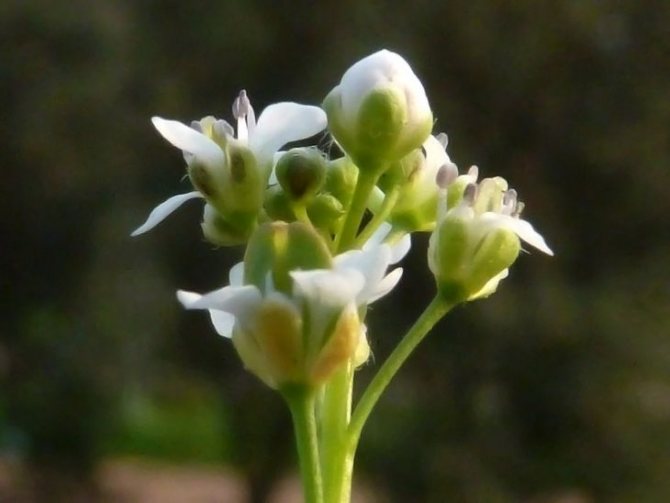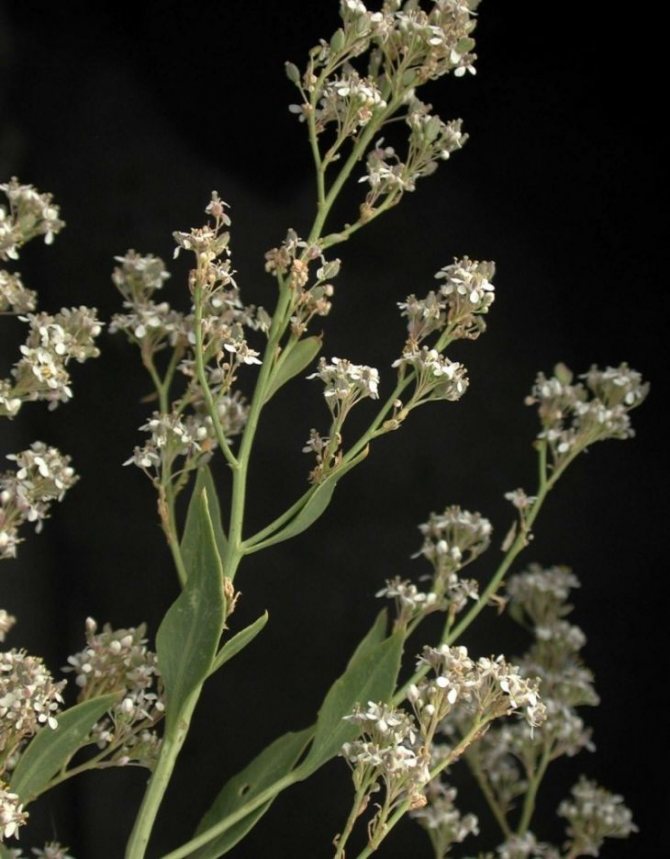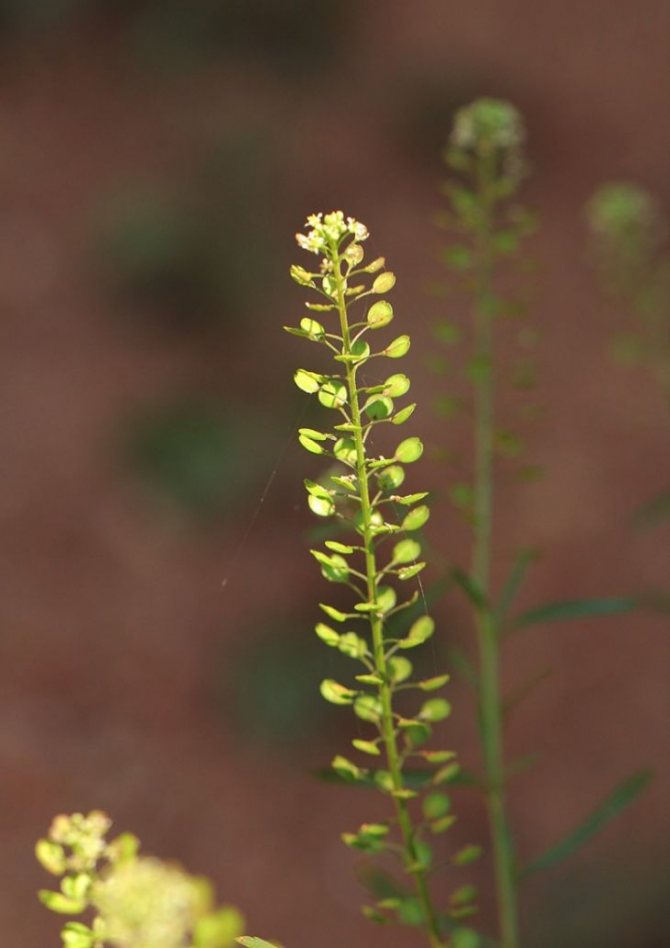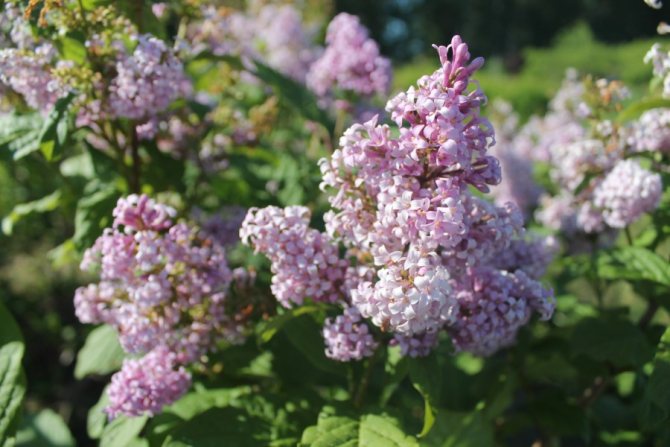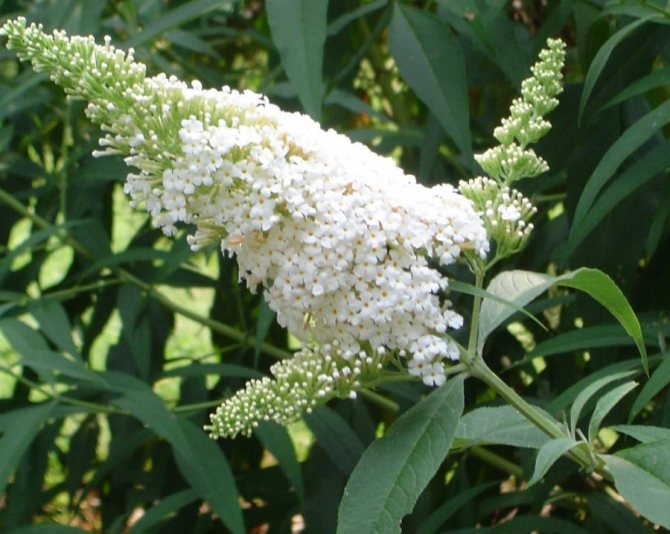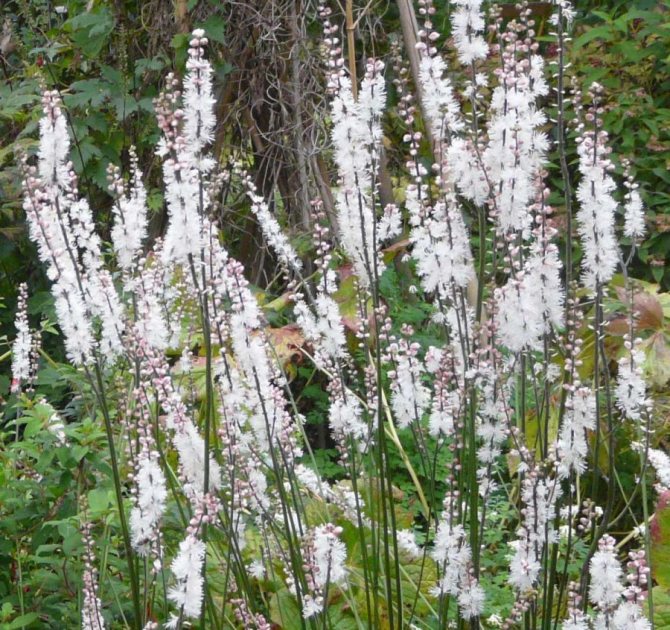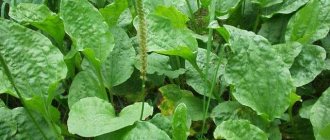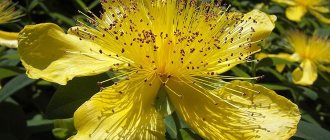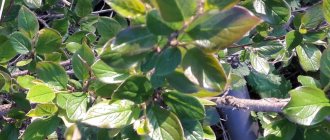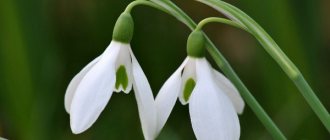Black cohosh is a perennial herb belonging to the buttercup family. Rod - Voronets. In another way, in a scientific way, it is also called "tsimitsifuga". It comes from the Latin words "cimex" - a bug and "fago" - to drive away.
The flower is called black cohosh because the decoction of the root of this plant in the old days was fought against bed bugs. It is also called “black cohosh” or “black snake root”.
In its natural form, it grows in the east of the United States of America, the Far East, Mongolia, North China.
Beauty and benefits, combined in one plant, make the black cohosh flower a real favorite of all modern florists. Moreover, the selection includes a huge number of varieties that adorn the backyard landscape design.
Look at the photo of the black cohosh flower in various variations, this will help you choose a plant for yourself:
Black cohosh: varieties and varieties
This perennial plant owes its unattractive name to the fact that it was previously used as an insecticide. It was believed that the unpleasant odor that leaves when rubbed drives away bedbugs.
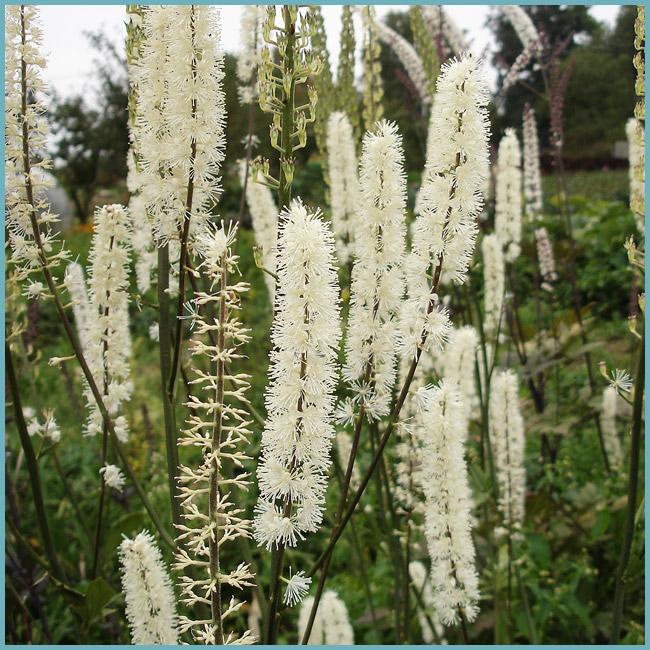
Black cohosh is a rather unpretentious plant to care for.
The scientific name - cimicifuga - translated from Latin also indicates this property. And only the poetic expression "silver candles", popular among the Germans, reflects the beauty that the black cohosh is endowed with. Planting and care does not require special skills, so he deservedly won the love of gardeners.
Attention! Black cohosh is considered a poisonous plant. After contact with it, you should thoroughly wash your hands with soap and water.
In ornamental gardening and landscape design, 10 of the 15 currently existing black cohosh varieties are used:
- plain;
- branched;
- Japanese;
- racemose, etc.
These varieties have varieties. They differ in shades not only of flowers, but also of foliage, for example:
- Pink Spike - pinkish inflorescences and dark red leaves.
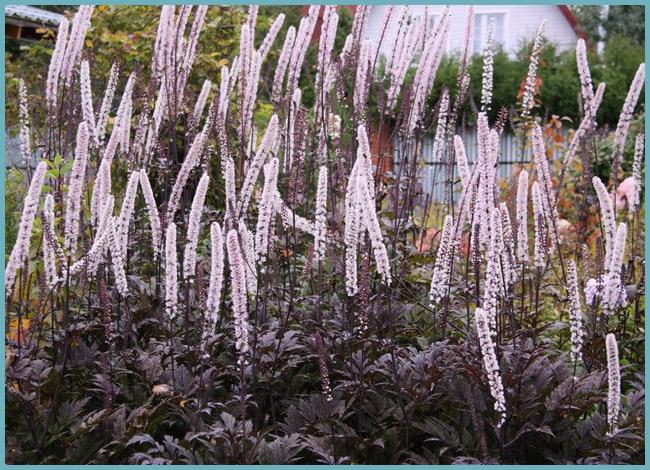

Pink Spike cultivar
- James Compton is a combination of cherry leaves and white flowers.
- White Pearl Leaves are light green in color. Inflorescences are snow-white.
Depending on the species, the cimicifuga blooms in summer or autumn.
Photo of a bug
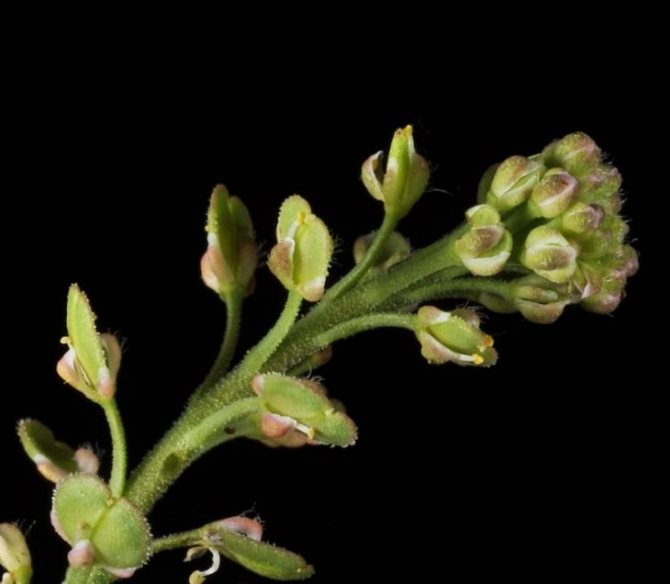

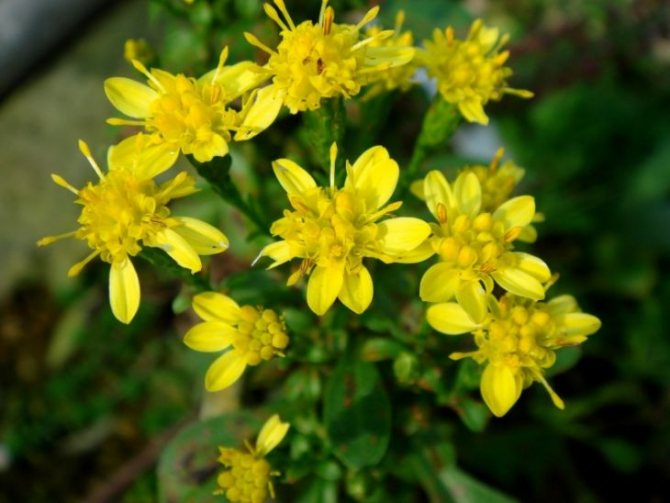

Common goldenrod - healing properties, medicinal qualities, indications and contraindications for the use of goldenrod (120 photos)- Lyubka two-leafed - medicinal properties and the best recipes from traditional medicine (110 photos)
- Jaundice - description of the plant, medicinal properties and features of use in traditional medicine (80 photos)
Please repost
0
2
Planting a plant
Black cohosh feels better in shade or partial shade than in the sun. Contrary to popular belief, you shouldn't plant it under trees. Perennial prefers humus-rich soil. The place must be protected from strong winds.
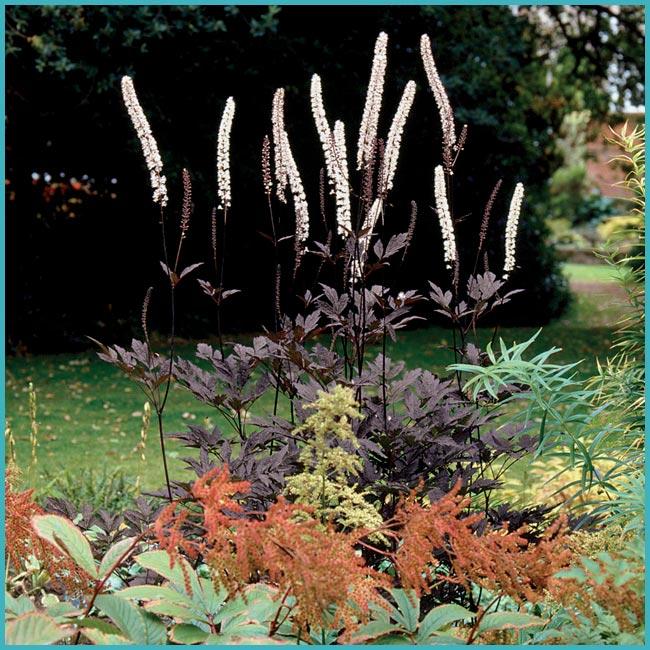

Black cohosh will decorate shady areas of your garden with its flowering
Choose fall or spring planting time. The depth of the hole is about 30 cm. Loosen the soil at its bottom and add organic matter there. Make the distance between plants at least 60 cm.
Advice. Tsimitsifuga does not really like transplanting and grows well in one place for 15-20 years.
How can you get rid of bed bugs?
Regardless of why bedbugs appeared in the apartment, the methods for their destruction will be the same. At home, insects are fought as follows:
- With the help of high temperatures. Use a hair dryer or steam generator to steam the prospective bedbug nest with hot steam.
- Scare away herbs. You will not chase away bedbugs that have already appeared, but you can try to protect your home from migration. They use wormwood, mint, tansy, lavender.
- Processing with vinegar, kerosene or turpentine. With prolonged exposure, this really leads to the destruction of bedbugs. The only problem is that you may not find all the nests, and the smell will not please people either.
- The use of poisons. With this option, you need to be very careful so as not to harm your pets and your loved ones. For safety reasons, the most powerful chemicals are not even sold in regular stores. they are intended for professional use.
Professional extermination of bedbugs
It is most effective to contact the pest control service so that professionals can fight bedbugs. The main problem with the extermination of these insects is that you may simply not find all the nests, but experts immediately know exactly where to look and can determine the location of individuals by many signs. In addition, professional poisons are used that you simply cannot buy on your own.
And the best part is the guarantee! Companies guarantee the complete extermination of bedbugs and visit you again free of charge if there are suspicions of the return of insects.
Professionals use 2 main methods for exterminating bedbugs:
- Cold fog. The insecticide is sprayed through a special generator that helps the poison penetrate any crevices. The smallest droplets gradually settle and destroy pests.
- Hot fog. The poisonous cloud supplied from the generator has a high temperature and has the following advantage: the particles are even smaller, which means their volatility is higher, the temperature itself has an additional effect on the parasites.
As a rule, hot fog is chosen in especially neglected cases, when the bugs have been around for a long time and have managed to fill the entire apartment.
The method of extermination and the type of poison is always chosen by the exterminator. Your task is to give him the maximum information so that the specialist can correctly calculate the amount of funds and draw up a competent plan to combat bedbugs.
Black cohosh care
- The soil must be moist. More frequent watering is necessary during dry periods; it is reduced in autumn.
- Mulch the black cohosh with leaves. This will not only conserve moisture, but also protect the flowers from weeds.
- Inflorescences that wither should be pruned.
- It is better to tie up the fragile stems of black cohosh. This is especially true in the care of tall varieties.
- For the winter, the plant is covered with spruce branches or foliage. Before that, its stems must be completely cut off.


The plant will feel more comfortable if the soil under it is mulched.
Klopovnik in traditional medicine recipes
There are a huge number of different recipes for the preparation of medicinal products based on the bug. They have been collected and tested by ordinary people for several hundred years.
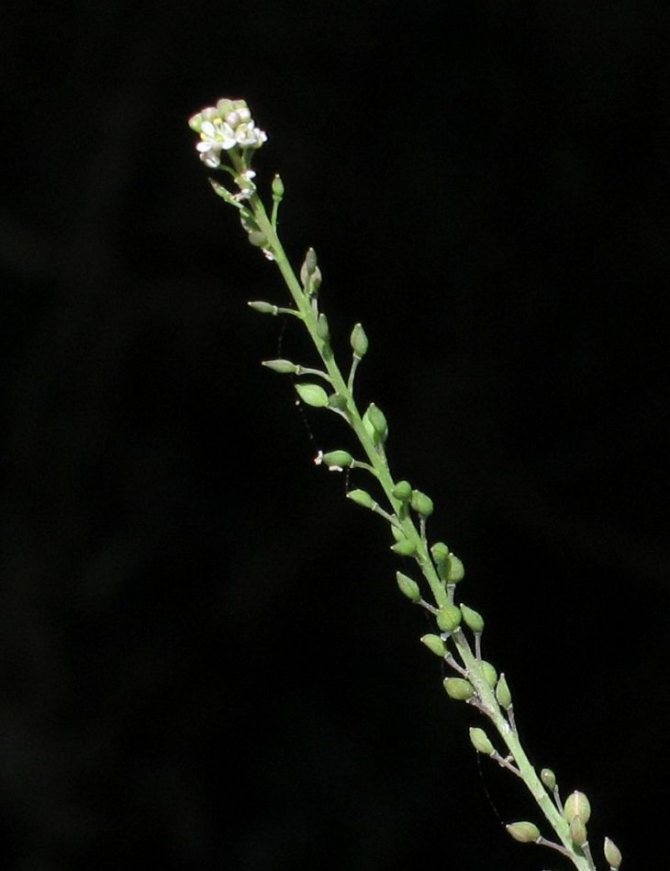

Such drugs are very effective and effective as additional adjuvants for the treatment of various diseases.


In this case, it is very important to use them expediently under the supervision of an experienced medical professional.


Fertilizing and feeding black cohosh
Tsimicifuga loves fertile land. During planting, add compost (7 cm layer) and sand (3 cm layer) to the hole.In the future, black cohosh needs to be fed for more lush flowering. It will be enough once a season.
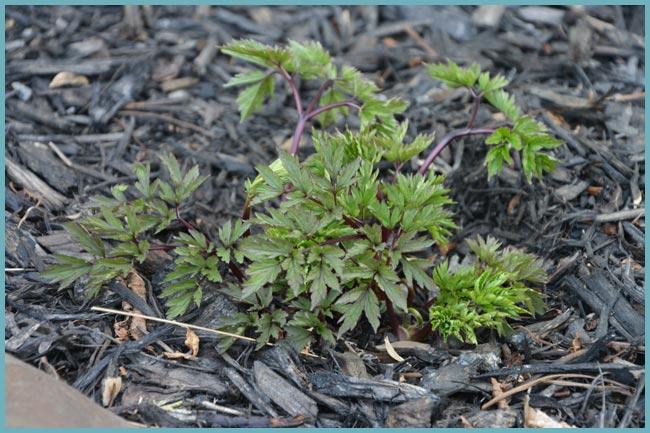

Black cohosh does not need frequent feeding
Fertilization time is early spring. You need to start from the third year after planting. Choose complex mineral supplements. They must contain nitrogen, phosphorus and potassium. For example, fertilizers by Kemira or Aelita Flower-1 are suitable for nutritious irrigation.
Silver candle or black cohosh is a spectacular perennial for shady places
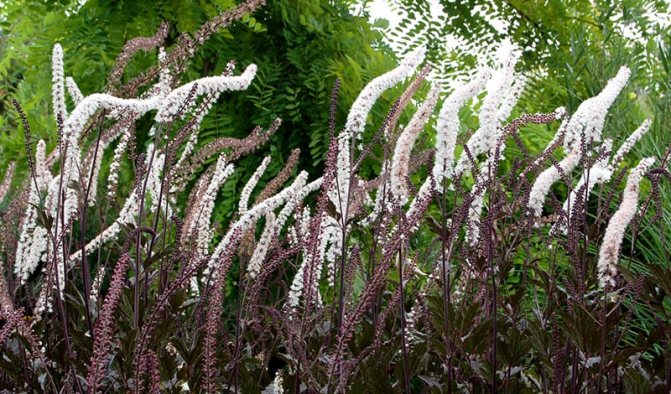

Tsimitsifuga is a flowering perennial of the Buttercup family; among flower growers, the name "black cohosh" is more common. A decoction from the roots of the culture has the useful property of repelling insects and pests. Meanwhile, behind a nondescript, even repulsive name, a beautiful plant is hidden. In German there is a more romantic name - "silver candles", describing the graceful fluffy inflorescences of silver-white color. Black cohosh is well suited as a decorative decoration of shady, humid areas of the site.
Black cohosh breeding
When breeding a flower for open ground, you can use bush division, cuttings or seed propagation.
- For division, take a bush that is at least 5-6 years old. A shoot or bud is separated from him, and the mother plant is planted back. The scion is soaked in a stimulant and then planted in a container and kept in a warm place. When it begins to grow, it is rooted in a permanent place in the open field. Better to do this in the spring.


Black cohosh reproduces easily by dividing the bush and grafting - Reproduction by cuttings should also be carried out in the spring. In order not to disturb the root, separate the daughter bud that has sprouts. You can tear off a leaf near the stem, it must have a "heel" - a piece of the bark of the mother plant. The petiole is dropped into the ground and covered, for example, with a plastic bottle.
- When propagating by seeds, it is better to use fresh material. It has the highest germination rate. You can sow black cohosh both for seedlings and immediately into open ground. Seedlings appear in about six months. At the initial stage, it is necessary to ensure low soil moisture, otherwise the seeds can rot.


Growing black cohosh from seeds will take a little longer
If you did not use the planting material right away, then it is better to postpone the procedure for 6 months. During this time, provide the seeds with special care to make growing easier. Black cohosh before future sowing must be kept in such conditions:
- first 3 months - at a temperature of +20 ˚C;
- next 3 months - at a temperature of +4 ˚C.
The plant, which is grown from seed, blooms after 3-4 years.
Where do you expect trouble? Causes of bedbugs
Insects are not a disease and they do not appear in your apartment by themselves, even if you are not the biggest fan of cleanliness. Where do bed bugs come from, even in a clean apartment? Let's find out!
Migration from neighbors
For a long time, you may not even guess that whole hordes of bedbugs live somewhere nearby. They usually begin to change their place of residence for several reasons:
- neighbors called pest controllers and surviving individuals try to flee;
- neighbors moved out of the apartment and bedbugs need to look for food;
- the heating was turned off in the apartment and the insects became too uncomfortable;
- during work, they removed old skirting boards or ripped off the wallpaper and stirred up the nests.
In any of these cases, the bugs begin to look for better conditions for existence and end up with one of the neighbors (or they are "lucky" to everyone at once). It is very difficult to avoid such a phenomenon, because you yourself do not always know what holes and cracks are in the apartment.
Inheritance from previous tenants
Bedbugs can be left over from previous occupants. Not all the past owners of the apartment admit to you that such a problem exists, and if the apartment was rented out, then quite honestly they could not even guess about bedbugs.But even if the presence of insects was known, not everyone knows how to deal with them properly. Many people still believe that it is enough to process and / or discard upholstered furniture and everything is in order. Whereas the bugs remain under the baseboards, wallpaper, as well as various crevices and just wait in the wings.
The presence of bedbugs can be indicated by a specific and not the most pleasant smell in the room. Disinsectors know him very well and can immediately determine the presence of bedbugs. If you have any doubts, it is best to contact specialists and call them to inspect the apartment. By starting the fight in a timely manner, you will save yourself and your loved ones from bites and prevent bedbugs from settling in new furniture.
Self-entry
Bedbugs are much smarter than you think! It is worth spending the evening with friends and you can already bring insects to your home on a bag or clothes. In addition, you can let bedbugs into your house in the following ways:
- bring on a travel bag, picking up on a train, bus or plane;
- bring on clothes, shoes or a bag, picking up on public transport;
- bring in upholstered furniture or used carpets;
- bring in new upholstered furniture or carpets if both new and old things are transported in a truck;
- bring in your own furniture by picking up bed bugs in the truck.
Diseases and pests
The indisputable advantage of black cohosh is its resistance to diseases and insects. The sick flower is visible immediately. It withers, the leaves turn yellow, become spotty, flowering is not so abundant. If you notice that this is the result of pests, treat the cimicifuga with a regular insecticide. The method of application of all fertilizers and preparations is usually indicated in the instructions.


Black cohosh resistant to disease
Black cohosh can also suffer from rotting. But this is only the result of improper care. Do not over-water or mulch the ground at the base of the flower. Inspect your plants regularly to identify problems in time.
The medicinal properties of the bug
Klopovnik is a unique medicinal plant. It contains many useful substances. That is why this plant is very successfully used as an auxiliary folk remedy in the treatment of various diseases.
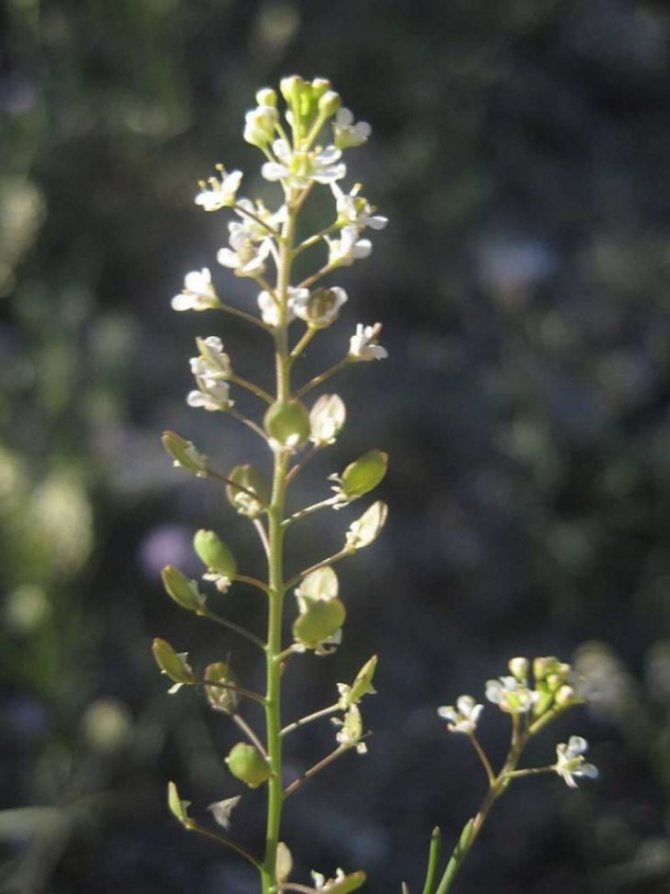

Correctly prepared tinctures on the basis of the bug plant contribute to the early healing of wounds; reduce inflammation; have anesthetic and antibacterial effect; remove toxins from the body; strengthen the immune system.


In addition, the regular use of such healing formulations will be effective in treating various purulent formations; prostatitis; help to increase male potency.
Read here! Three-leaf watch - description, application, recipes and medicinal properties of the plant (110 photos)
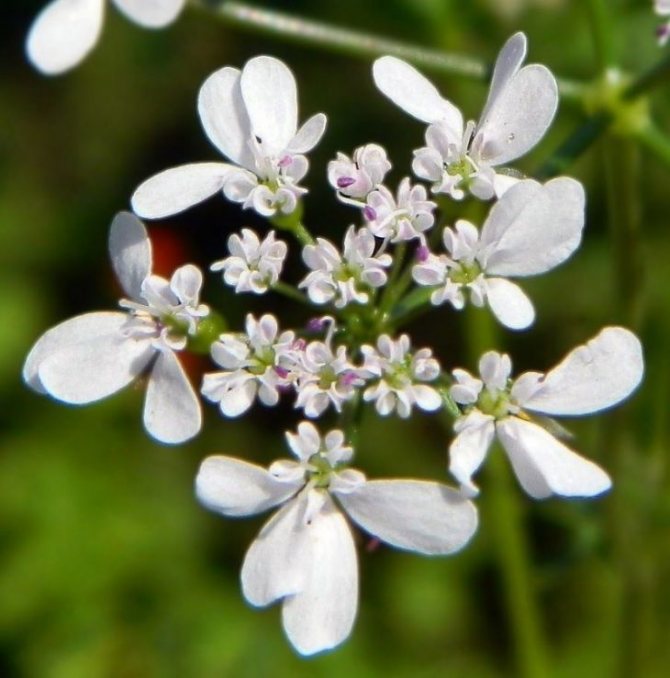

In addition, preparations based on the bug are simply irreplaceable in the treatment of rheumatism, scurvy, gout, they are very often used in gynecology in the fight against uterine bleeding.
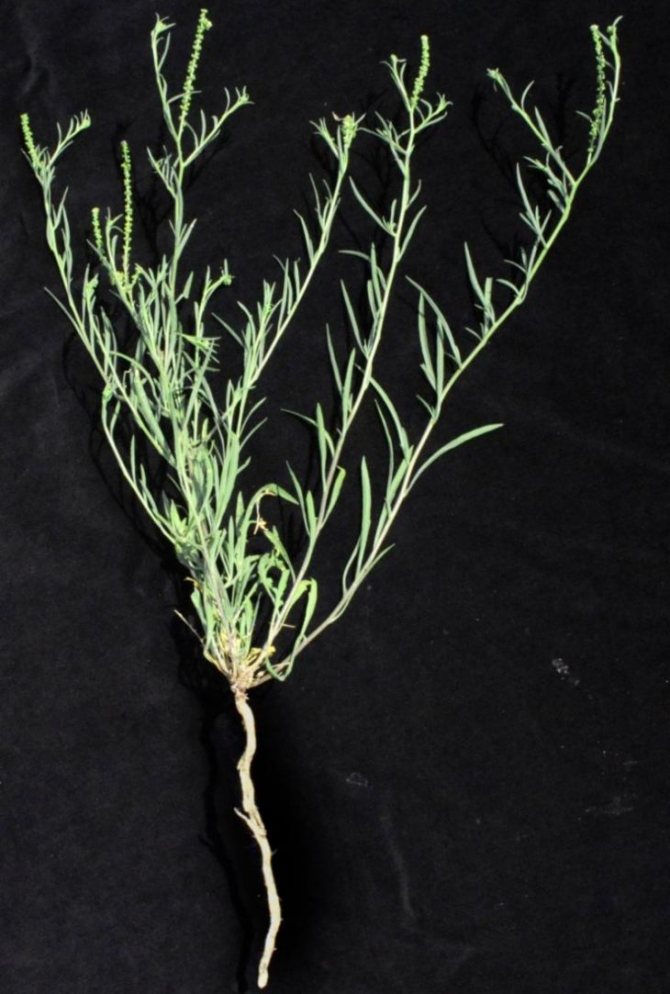

Regular use of such funds will help avoid vitamin deficiency and contribute to the overall strengthening of the body.
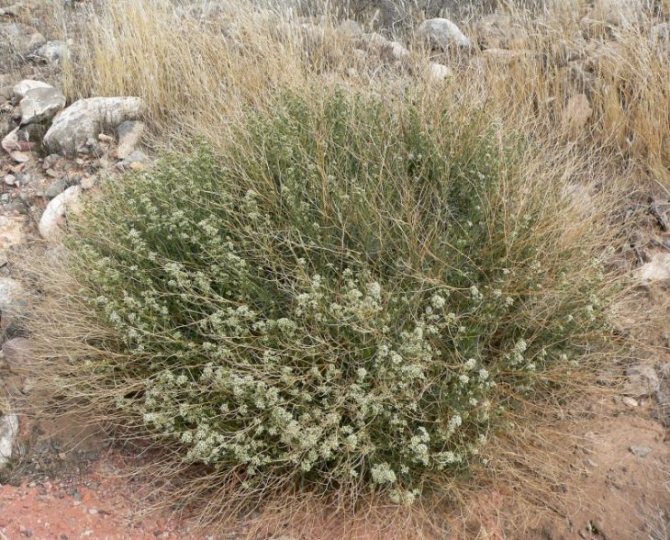

Black cohosh combined with other plants
Landscaping experts recommend choosing neighbors for the cimicifuga, who also like shade and wet soil. Hostas, aconite, buzulnik, Japanese anemone, and astilba have growing conditions similar to black cohosh. Fern and sedge will be an excellent addition to the landscape. Harmoniously, as if in the photo, the combination of black cohosh with red and purple flowers looks: columbine, lily, kupena.
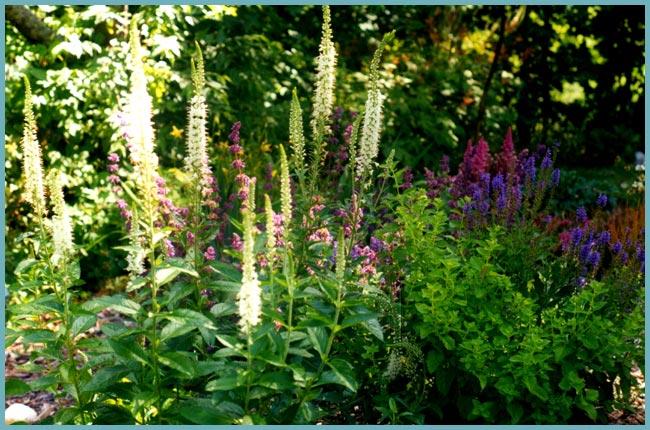

Black cohosh in the flowerbed
Climbing brunners or lungwort, perennial moss and maple leaves will be able to fill the empty spaces on the site with this plant. They will prevent the soil from drying out quickly, which is undesirable when growing and caring for black cohosh.
Undersized saxifrage, tenacious or hoofed hoof will also retain soil moisture after watering or rain and create a good ensemble with cimicifuga. A beautiful composition with her is made up of undersized conifers and bergenia, which will serve as a good background.
The main myths associated with bedbugs
There are several common misconceptions worth knowing about:
- Bedbugs don't start clean. No, as we wrote above, they can migrate from neighbors or come on your clothes or pet hair. They do not care whether you are dirty or clean, the main thing is to get access to the body.
- You can get rid of bedbugs by treating the furniture and boiling the linen. Alas, such actions will not be enough - pests are hidden under the baseboards, under the wallpaper and in many secluded places.
- You can get rid of bedbugs by leaving the furniture in the cold. This approach is still practiced by the owners of private houses - they expose upholstered furniture in the cold in the hope of destroying insects. At the same time, bed bugs continue to live and reproduce in many other areas of the house.
- If the neighbors have bedbugs, and they don't want to invite pest controllers, nothing can be done. It's not so easy, but still possible - you can force neighbors to call the service without fail. To learn more, please contact our managers - they will tell you everything. It's even easier if they have minor children in their apartment.
Black cohosh in landscape design
You can plant a cimicifuga either alone or in a group, on a lawn or in a mixborder (mixed flower garden). For a single planting, it is better to choose tall varieties. For example, Dahurian or European cimicifuga, atropurpurea, etc. are suitable. For a rock garden, take a sharp black cohosh, which rarely grows above 80 cm.
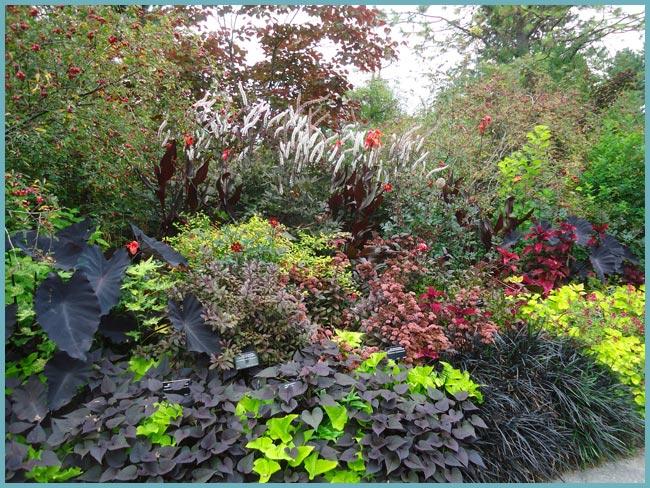

Black cohosh in landscape design
In landscape design, these plants are also used to decorate borders or flower beds. For this purpose, take undersized varieties of black cohosh (for example, Frau Herms). Often "silver candles" are planted in open ground near water bodies, walls or fences. It should be borne in mind that they look especially attractive in the middle of the flower garden. Florists are interested in growing and breeding black cohosh, because it looks great in autumn bouquets.
If you managed to appreciate all the beauty of black cohosh in the photo, then you will like it even more on your own site. The effort put into landing and caring for it won't go to waste. After all, the cimicifuga is beautiful not only during the flowering period, but also after it. And with age, she, like a real woman, only becomes more attractive.
Signs of bedbugs
Those who have never encountered bedbugs may not immediately understand what is happening and what kind of pest has wound up in their house. But there are several signs by which you can determine the presence of bedbugs.
Bite marks
Bite marks are quite characteristic - an elongated bite path appears on the skin, the bites themselves reach 5 mm in adults and up to 10-15 mm in children. At the same time, unlike many other insects, you do not feel pain during the bite! Discomfort appears only 20 minutes after it.
Smell
As we mentioned above, bed bugs emit a specific smell. Someone calls it the smell of sour olives, someone - brandy smell. Even if you don't know for sure what bedbugs smell like, an unusual unpleasant smell should alert you.
Waste products
You may find dried feces or chitinous membranes. Take a closer look at the small debris in your new place of residence, especially when it comes to the bedside area.
Eggs
Bed bugs' eggs are up to 2mm and look like small grains of rice - white and oblong. They can usually be found in secluded places - under a mattress, in a sofa, an armchair, under skirting boards, etc.
Traces of blood on bed linen
Unlike mites, bugs are fragile enough that you can accidentally crush them even in your sleep. In memory of the fallen individuals, blood stains remain on the bed linen, which are especially clearly visible on light-colored fabrics.
The insects themselves
The most obvious sign is the bugs themselves, which are easiest to find under the mattress or inside the sofa. The body of these insects is flat, slightly oblong. In size, an adult can reach 5 mm.
Varieties and types of black cohosh: photo
Description of the cimicifuga
This perennial, familiar to many experienced flower growers, is one of the brightest representatives of the Buttercup family. At this moment 15 species of this culture are known, each of which begins to bloom at a different time. Wild species of black cohosh can be found in Siberia, European mountains, as well as temperate latitudes of North America, China, Mongolia, the Far East and the Japanese islands. Any species of black cohosh get along well in our climate. After all, they are not afraid not only of spring frosts, but also severe winter cold.
The origin of the name of the cimicifuge is interesting: this word is translated from Latin as "Driving away bedbugs"... The plant got such an unpleasant at first glance name because of the stinking black cohosh, which is widely used as an insecticide.
It costs only a little damage this perennial, and the air immediately begins to be saturated with an unpleasant-smelling substance. Therefore, it is not surprising that the people often call it "ordinary stinker" or "stuffy root."
This variety is not widely used for decorative purposes. Usually, gardeners prefer varieties that have a more pleasant aroma. More accurately conveys the meaning of the name of this plant in the German version, which sounds like "silver candles".
Black cohosh attracts attention not only by its graceful appearance, but also by its structure. Leaves, which are similar to large parsley, have decorative properties; they are formed immediately from a thick tall stem. Inflorescences usually have two forms - spike and racemose.
In those years when summer is cool, black cohosh may not bloom. However, it still has a considerable number of advantages that are valued in landscape design: vitality, unpretentiousness, frost resistance and durability. It can be grown in one place without transplanting for 25 years... Moreover, from year to year, it will only add to the attractiveness. And even if the name does not sound so beautiful, this does not apply to its decorative properties, because black cohosh is a very colorful and spectacular plant.
Pruning and support for cimicifuga
Black cohosh grass requires a garter if there may be strong winds in the country.
It is also better to tie up young plants that have not yet matured with not yet matured stems to a support.
In this way, branches and peduncles can be prevented from breaking off.


After the inflorescence withers, it is recommended to remove them.
This will keep the plant looking more attractive.
You can also prevent seed scattering by trimming faded flower stalks.
The seeds rarely germinate, but it is still better to take preventive measures.
Application
The flower is used as part of multi-species flower arrangements. Due to the large size of the bush, black cohosh is suitable for planting in the background. Combines with other perennial tall garden crops with pink or reddish buds.
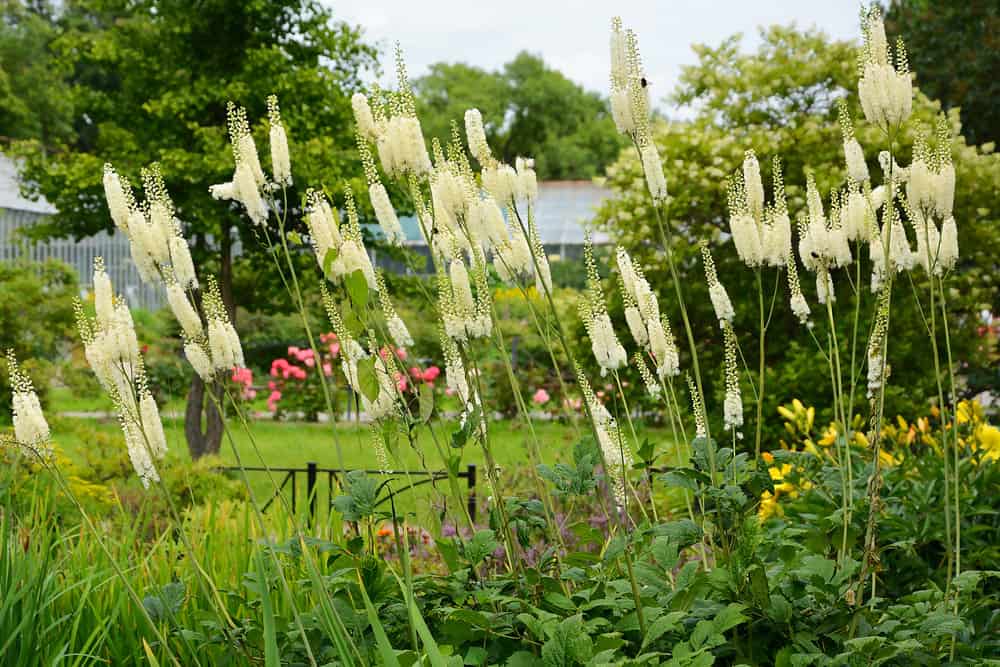

Tsimicifuga plays an important role in Chinese medicine. Leaves and flowers are used for snake bites, for the preparation of fortifying agents. It is believed that a decoction from this plant is able to enhance labor activity, and also reduces soreness during menstruation. In Western Siberia, rhizomes are used to make alcoholic tinctures for the treatment of colds, malaria and bronchitis.
Species diversity
The genus includes about 8 species, differing in the habitat, appearance and decorativeness. Some of them are cultivated as a garden plant. Known black cohosh species:
- Branched... Large plant growing up to 2 m in height. Among gardeners, this variety is known as atropurpurea. The flowers are white, the leaves are purple;
- Daursky... Differs in a powerful rhizome, consisting of two equal parts. The bush can grow up to 100 cm, the inflorescences are half naked. The leaves are large, feathery. Blossoming is possible from July to August;
- Racemose... In the wild, it is found in the northern states of the United States. It is a branched plant with an erect stem up to 200 cm high. The bush can grow up to 60 cm wide, the rhizome is very powerful. There are fine teeth on the border of the leaf blades. White flowers are small, exude a honey aroma;
- Plain... Prefers forest meadows and mountainous areas. The rhizome has a two-headed shape, rather thick. The height of the stems is 100 cm, the leaves are located only at the base of the rhizome. Drift-shaped inflorescences of a drooping type. The species is thermophilic, not recommended for cold regions.
Planting material can be purchased in the form of seeds, seedlings or rhizomes that take root quickly. Most popular varieties: White Pearl, Brunette, Braunland, Armleuchter, Frau Herms, James Compton.
Planting and care on the site
First, gardeners choose a place to plant black cohosh. Planting and care in the open field is carried out taking into account that the plant tolerates well both lighted and shaded areas... And you should also take into account that this herb does not adapt well in a new place. Therefore, the growing area must be permanent.
The soil should be loose and slightly damp. The soil is carefully dug up and organic fertilizers are applied. For this, compost or humus is used. At a distance of 60 cm from each other, holes are dug 30-40 cm deep, and the width is the size of an earthen coma on the roots. A drainage layer of broken brick or crushed stone is poured onto the bottom of the pits. The drainage is sprinkled with fertile soil and the seedling is carefully lowered.
Then the seedling is covered, slightly compacted and abundantly moistened. Mulch is poured around each planting. In the future, gardeners water the plant once every 2-3 days. After each watering or rain, the soil around the plant is loosened.
Read also: Liverwort: description, planting and growing
Gardeners feed black cohosh once a year. They apply organic and mineral fertilizers every spring. Before the onset of cold weather, the bushes are completely cut off and, if necessary, covered with foliage or spruce branches for the winter.
Summing up, it should be noted that the easiest way to grow black cohosh is using the methods of cuttings or dividing the bush. And also the planting site should be constant, since the plant does not tolerate transplantation well.
Choosing a place for growing
Tsimicifuga easily enough adapts and adapts to external conditions, including humidity and lighting, so choosing a place for planting it is not difficult, you just need to take into account that once planted a snake root bush can exist for up to a quarter of a century, from this point of view, the landscape with the participation of this plant needs to be thought out in advance, especially since the snake root does not like transplants.
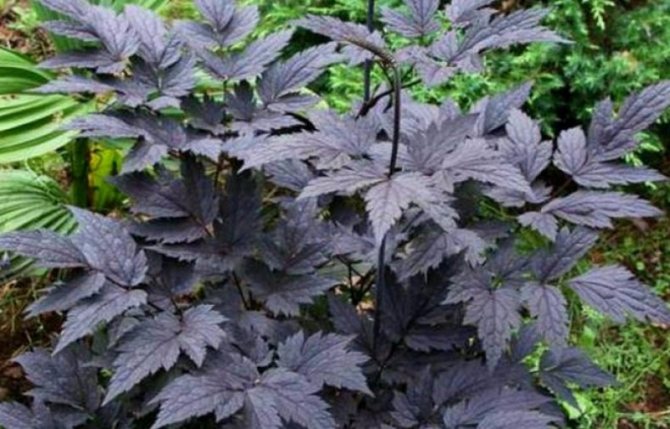

Black cohosh generally tolerates brightly lit areas and a completely shaded place in the garden (the second option is even more preferable, since it is more reminiscent of the natural habitat of this perennial).
In relation to the soil, the cimicifuga is unpretentious, but prefers nutritious loose soil with deep cultivation and the absence of stagnant moisture.
Care Tips
Caring for black cohosh outdoors is extremely easy.Black cohosh is undemanding to the nature of the soil, the only thing that really matters to it is the saturation of the soil with organic matter. Weeds do not bother him too much, since he is able to suppress their growth. If individual trash elements appear, they must be removed. The main care is timely and sufficient watering.
In order for moisture to remain in the root zone, gardeners use several techniques:
- mulching - allows you to prevent rapid evaporation of moisture, additionally protects against weeds;
- sowing a number of stunted plants that help retain moisture;
- choosing the optimal place - shaded, away from large plants with a more powerful root system.
Of course, black cohosh should be watered regularly, reducing watering closer to autumn. Caring for him in the winter is also simple. Before wintering, it is necessary to cut off the aerial part of the plant, and then carefully cover it with fallen leaves and spruce branches.
In addition, this "pet" requires little care during the growth and flowering period. For example, you should regularly cut off faded inflorescences. If necessary, provide the plant with support if the tall stems begin to decay or collapse. To do this, all the stems must be collected in a kind of bundle and tied around the support.


You don't have to worry about fertilizing the first two years after planting. In the third year, in early spring, black cohosh should be fed with complex mineral fertilizers. Once a season is enough. If we consider that this perennial, moreover, is resistant to damage by pests and lesions by various diseases, then it can be argued that caring for it is the simplest. If, nevertheless, an infection occurs with something, then it will be possible to identify it immediately. The diseased plant will react immediately. Leaves and flowers will dry out, spots will appear. The damaged copy will have to be treated with special means - depending on the cause of the defeat.
Knowing the love of black cohosh for water, sometimes gardeners overdo it when caring for their pet. Overflow, stagnation of moisture can lead to rotting of the plant. To avoid this, you should objectively assess the need for watering at one time or another. If the summer is rainy and cold, you can water black cohosh much less often than usual. When mulching the soil, you do not need to cover the ground at the very base. All plants in the garden, including black cohosh, should be checked regularly to identify damage as soon as possible.
The use of black cohosh in the design of the site can be very diverse. It goes well with flowering plants of all shades due to its neutral color. It is desirable to surround it with cultures whose needs and preferences are similar. Black cohosh goes well with fern and moss, neither gladioli nor phlox will overshadow it.
Botanical characteristic
Black cohosh, or cimicifuga, is a genus of tall perennials of the Buttercup family. It is found naturally in some regions of America, the Far East, Mongolia. From the Latin language, the name of the flower means "chase away the bugs." This is due to the ability to exude an unpleasant odor when the green parts are damaged. It is widely used in traditional Asian medicine.


The bush is very powerful, it can grow up to 2.2 m in height. The stem is erect and slightly branched. Most of the leaves are located in the lower part of the plant, are feathery in shape and characteristic hairs on the surface. A large number of small flowers are collected in a voluminous racemose inflorescence of white or yellow hue. Budding begins in mid-June and lasts until autumn. Fruit is a leaflet containing up to 8 seeds.
How to choose the right variety
The selection of a variety begins with the determination of a suitable species.Take into account the characteristic features: frost resistance, soil quality, shade tolerance or love for an abundance of light, the size of the bush. If black cohosh is chosen for a single planting, preference is given to powerful bushes with a height of 1 to 2 m. Borders are decorated with low-growing plants with a height of 40 cm. If the variety easily tolerates moisture, the bushes can be planted near a reservoir in the yard.
Black cohosh planting is often combined with thuja. If the culture will grow with other ornamental plants, they must all be adapted to the same growing conditions.
More about black cohosh can be found in the video:
Features of planting in the garden
Black cohosh is usually planted as a seedling or rhizome. The seed method is used only for rare varieties, since the planting material has poor germination and is often sick at the seedling stage. The optimal working time is the second decade of April or the beginning of May.
The plant does not adapt well after transplantation; it is recommended to choose a place very carefully. It is desirable that it is in constant partial shade. For example, next to a structure, fence or under the crown of large trees. The flower is unpretentious to the ground, but it feels best on loose and fertile soils.
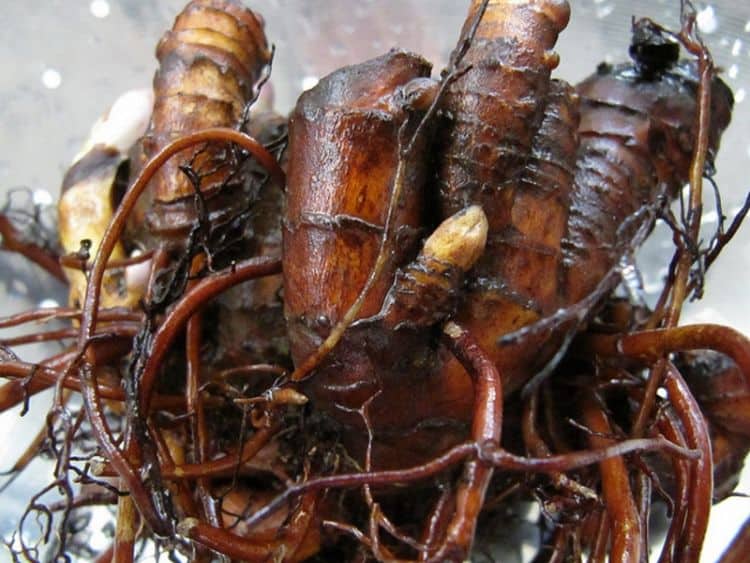

Landing technology
Black cohosh develops a large and fleshy root, which is often used for vegetative propagation. Often, planting material is sold in the form of seedlings or adult bushes from the age of 3 years. Planting technology in the garden:
- Prepare a place for embedding. Dig up the ground, dig holes up to 60 cm deep.
- At the bottom, lay a mixture of wood ash and sand, a layer of humus or mullein 10-12 cm thick.
- Carefully place the seedling in the center of the hole, cover with fertile soil. Tamp down the area of the trunk circle.
Immediately after planting, the plant must be mulched with peat or sawdust, watered abundantly with warm water with a volume of 10-15 liters. If you are using a seedling taller than 100 cm, it is recommended to install a support to protect it from the wind.
Growing from seeds
Planting black cohosh with seeds is a painstaking and long process. Only fresh planting material is suitable for sowing, since it loses its germination after a year. Work can be carried out in late autumn or early winter in individual containers. Any soil for decorative flowering crops is suitable for embedding.
It is important that in the first 3 months the temperature is in the range of 15-20 oC, after the appearance of the first shoots, it is lowered to 5-10 oC. The seeds can germinate from 30 to 120 days. Containers with seedlings should not be covered, which is important for the harmonious development of plants. A transplant to a permanent place is carried out not earlier than the second half of the summer. The first flowering is possible only after 3 years.
Decorative use
The variety of species and ease of cultivation described above has led to its popularity among landscape designers and hobby gardeners. It will perfectly fill the empty spaces in the composition or become its main exhibit.


An unusual combination will turn out in a duet with dwarf deciduous and coniferous trees. The play of contrasts will create an indelible impression and a real paradise for lovers of macro photography.
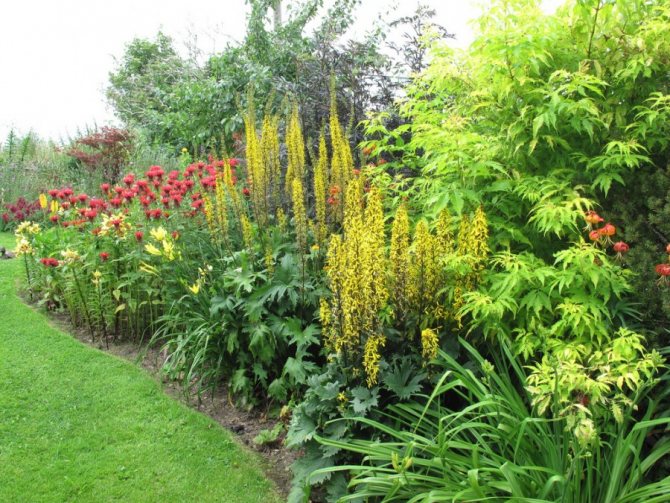

It would also be a good option to plant low-growing herbaceous shrubs that hold back moisture to the cimicifuge (Latin name). When planting a large area, this solution kills two birds with one stone - a comfortable environment for growth is provided, and with skillful play with the color scheme, an unusually beautiful living carpet with "candles" is formed. Which, by the way, attract bees, creating an additional entourage.
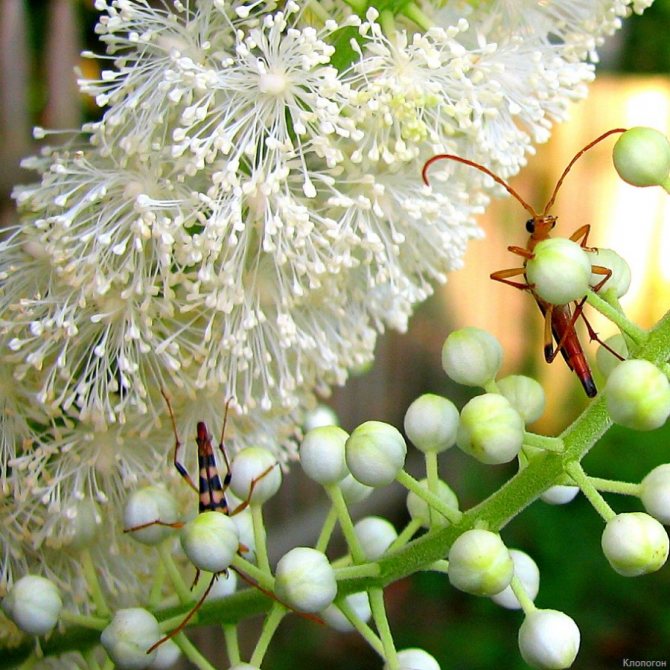

But the best application remains the design of garden paths and flower beds. For such purposes, undersized species are best suited, although it is certainly a matter of taste.
Live borders will not leave anyone indifferent. As a basic plant in a flower bed, it opens up a great many variations, each of which will be beautiful in its own way.


Description and biological features
The plant has many names - in addition to black cohosh or simicifuga in Latin (both literally means "warding off bugs"), it is also known as black cohosh, black cohosh and black snake root. A very beautiful name for the same perennial is silver candles, it is much more suitable for quivering light purple, pink or white peduncles proudly rising up like candles on an expensive candelabrum. The black cohosh bush itself also looks very elegant and unusual, and its cultivation is not associated with special troubles. Tsimitsifuga is a member of the buttercup family and is represented by more than one and a half dozen different species with a huge habitat. North America is considered the homeland of the plant, but it also grows in vast areas, mainly in the eastern part of the globe (the territory of China, Japan, East Asia and the Far Eastern forests).
Various species of black cohosh bloom from mid-July to autumn, this period in the life of a plant lasts quite a long time - sometimes up to one and a half months, which, of course, is an additional bonus for summer residents. But the non-flowering cimicifuga looks quite attractive.
Preparatory measures for the winter season:
As an adult, black cohosh can tolerate winter cold well in the Middle Lane. Gardeners who grow it in the Moscow region say that the plant does not need any shelter and that it tolerates winter well. In those regions where winters are especially harsh or there is not enough snow, the bushes should be covered with spruce branches or dry leaves. In order for the plant to winter well, nitrogen fertilizers cannot be used from mid-summer. Nitrogen contributes to a set of green mass, which means that by winter the plant will become weak and for the winter period it will not have enough strength.
Cropping:
To prepare black cohosh for winter, it is enough to cut off all the leaves and stems to the very base. This must be done before the cold weather sets in. The bushes of the first years of life should be covered with a 10 cm layer of mulch. Especially, this will be done in regions where temperature drops and severe winters often occur.
In order to preserve the decorative effect of the bush, it is necessary to prune, thinning the foliage and removing the faded shoots. Carry out such a procedure during a warm period, when it is convenient for the gardener.
Reasons for the lack of flowering:


Black cohosh is decorative already because of its bright, succulent foliage, which gathers in one luxurious bush. However, gardeners who do not yet have experience are often in a hurry to find the cause and eliminate it. Often, mature buds do not show their petals for reasons other than leaving. There are a number of natural reasons why black cohosh does not bloom, these include:
0. Low amount of sunlight due to cloudy weather. The plant grows beautifully in the shade, but if the summer turned out to be cloudy, then the opening of the buds does not occur, but the peduncles wither.
0. Also, the reasons include cold spring and a sharp drop in temperature in summer. Blooming black cohosh is impossible if the thermometer dropped below +15 degrees. At this temperature, branches do not develop and buds crumble.
0. If you do not moisten the soil for a long time and allow the formation of a crust on it, then the plant ceases to have enough nutrients and flowering does not occur.
0. If you plant the bushes in an open sunny area, where the sun will touch the plant all day, or plant a full shade, then you should expect nothing more than beautiful foliage. In such conditions, peduncles do not develop.
The main mistake during maintenance is considered to be too much water in the soil, which leads to rotting of the root system. Also, the lack of the necessary nutrients badly affects the condition of black cohosh.If the leaves begin to fade, wilt or become dry, then this signals the need for top dressing.
Most black cohosh varieties show their beautiful flowers in July, but they unfold gradually from the bottom up. Those species that belong to the flowering later, it is better to grow in the south of the country, since in regions with a short warm period, the peduncles do not have enough time to form.
Seed method
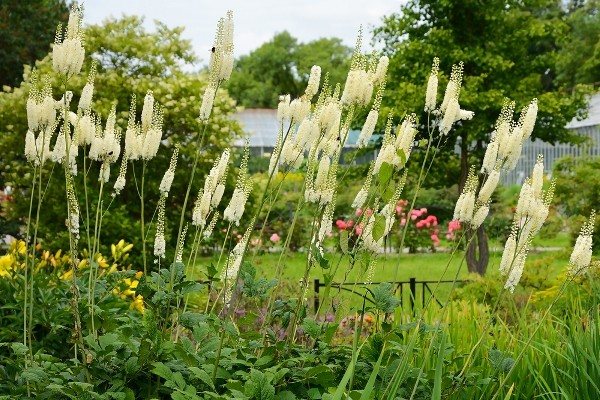

To propagate a plant by seed, you need to stock up on patience and time. It is important to remember that the seeds cannot be stored, so they should be sown immediately, and they also have limited germination. There are some peculiarities of growing black cohosh with seeds.
Planting seeds collected in the autumn should be carried out immediately after the collection of seeds and the end of flowering, since leaving it, they will lose their germination.
Sowing black cohosh seeds is carried out in containers that are filled with loose soil mixture. Then they are placed in a warm room where the thermometer will not drop below +20 degrees. They must stay there for three months. Watering should be done infrequently, the land should remain semi-dry.
It is not necessary to create a greenhouse effect by covering the container with a film so that the seeds do not vomit.
After three months, the plants must be transferred to the one where the temperature is kept at +16 degrees and kept in such conditions for the same amount of time.
The bores are grown in the same way as regular seedlings. They can be planted in the garden at any period of formation. The main thing is to carry out planting activities after the threat of frost disappears.
The bush will show growth and development annually, but the first flowering is possible no earlier than in 4 years.
The significant disadvantages of seed reproduction include the difficulty of growing such a plant in central Russia. This is due to the cold and snowy winters. This method will be most suitable in the south of the country.


